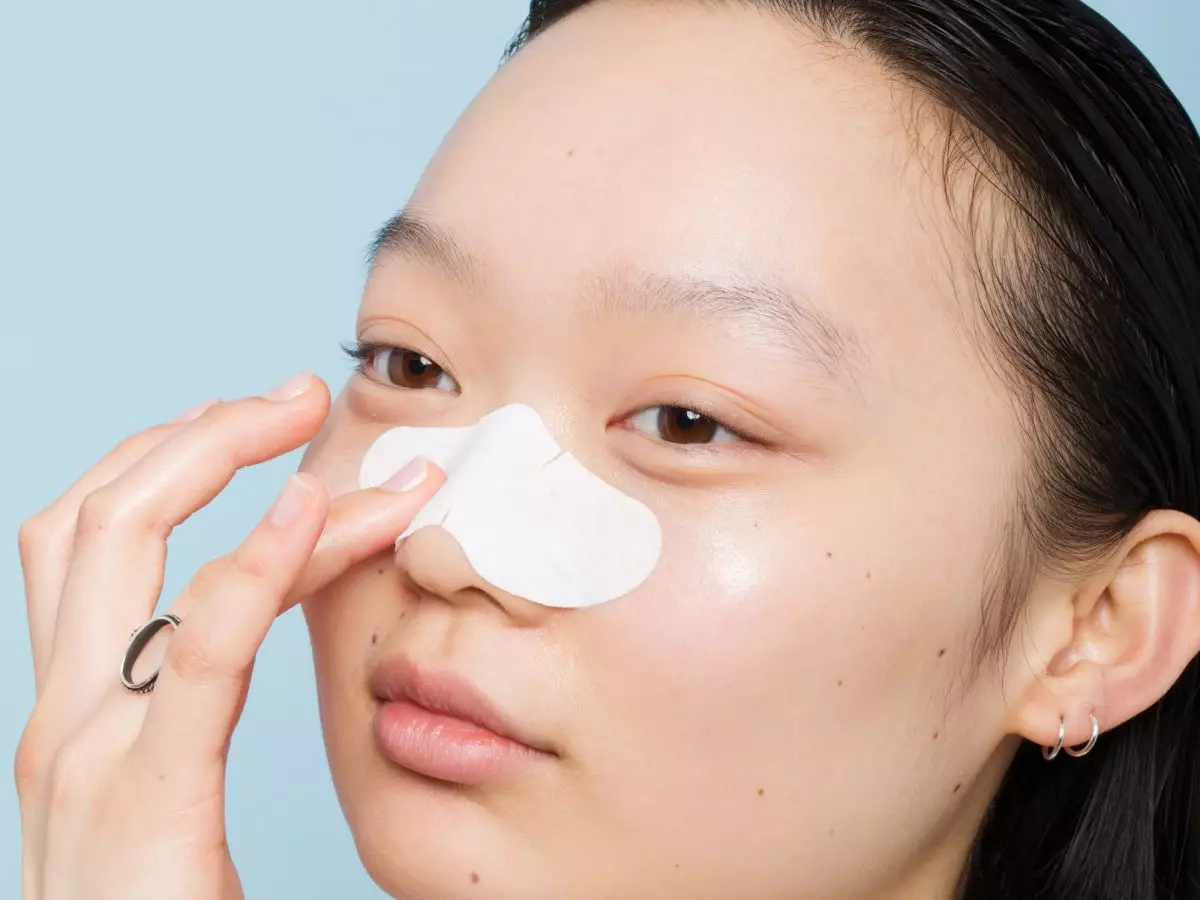
If you haven’t intensely examined a freshly used pore strip with gross fascination, some (a.k.a. the 21 million and counting who tune in to Dr. Pimple Popper’s latest) might say you haven’t lived. Saving up to buy a package was basically a high school rite of passage, and once you partook in the whole routine, an obsession was usually promptly born. To this day, pore strips are a mainstay in many skin-care regimens across the globe.
Here’s the thing, though: Skin-care aficionados argue that not only are pore strips ultimately ineffective, but that on top of that, they’re actually bad for your skin. Mention them on Reddit’s r/skincareaddiction, for example, and you’ll get schooled within minutes by members who take their routines very seriously. Curious to know how much of this pore strip slamming was fact or fiction, we went straight to the experts.
How do pore strips work?
Pore strips contain ingredients that, when mixed with water, create a dense, glue-like adhesive. Biore’s polyquaternium-37 is an example of one such ingredient. The pore strip hardens as it dries, and the adhesive attaches to the top layer of dead skin cells, dirt, hair, oil and, yes, blackheads (not to be confused with sebaceous filaments). All of the above is the goo you find on the used strip, and it can create quite the dramatic visual.
In that sense, pore strips are able to “clean” the surface area of your nose. “Surface,” however, is the key word here. Despite what it may look like, there’s very little deep cleansing going on.
“Pore strips work by removing the superficial portion of the blackhead,” explains dermatologist and director of Minneapolis-based Zel Skin Clinic Brian Zelickson, MD. “The adhesive will stick to the upper portion including the oil or sebum and pull the ‘material’ out. While these pore strips may successfully remove portions of the blackheads instantly at the time of application, there is no evidence that the strips treat blackheads from recurring on a consistent basis.”
Do pore strips cause damage?
Your nose probably feels smoother and appears less congested after removing a pore strip. After all, it’s essentially been ridded of surface gunk. Not so fast, though.
One of the most alarming claims against pore strips is that, in addition to causing irritation, they can break capillaries. We wanted to get to the bottom of the issue, so we asked various sources. The answers we received varied slightly, but the general consensus from the dermatologists we spoke to was that the strips don’t break capillaries.
“Pore strips do not adhere tightly enough to induce the degree of force necessary to interfere with superficial blood vessels by pulling off a strip, and therefore pose no risk for breaking capillaries,” says Kally Papantoniou, MD, dermatologist with Advanced Dermatology PC.
Craig Kraffert, MD, dermatologist and founder of Amarte Skincare, agrees. “Pore strips will not break capillaries,” he says. “The thin red lines that we call broken capillaries are actually enlarged surface blood vessels. These vessels form from a variety of stimuli, and the tendency to develop them is partly genetic. The factors that trigger broken capillaries include rosacea tendencies, sun exposure, high hormone levels, and repeated skin irritation and inflammation.”
While pore strips may not be busting capillaries and taking names, that doesn’t mean they’re an ideal choice. For starters, they still have the potential to tear or injure your skin, says Dr. Zelickson, who adds that “this tearing is especially common in individuals with naturally thin skin or skin disorders such as rosacea, psoriasis, or seborrhea.”
Pore strips may also cause breakouts, particularly in cases where they aren’t used correctly. For example, if you don’t wash off all the adhesive residue, you may break out shortly after.
Dr. Kraffert says that pore strips may also “further irritate or harm sensitive, sunburned, or acne-prone skin,” so if you’re already dealing with acne or irritation, avoid them.
What are effective alternatives?
All our dermatologists agree that while a pore strip can temporarily “clean” the surface of your skin, clarifying and exfoliating ingredients are a better bet.
“For long-term blackhead removal, using a product with salicylic acid is much more effective than a pore strip. Salicylic acid gently helps skin turnover, unclogging your pores,” explains Dr. Zelickson. “It works by penetrating the inside of the pores and all of the sebum that has accumulated within them, versus just the top layer.” He adds that gylcolic acid is another active ingredient in products that will help remove blackheads by gently lifting away dead cells.
You can also try gentle physical exfoliators that buff away dirt, debris, and sebum buildup, or clay masks that absorb oil and clarify the skin, thereby reducing the appearance of your pores. These latter two options work best if you’re working with oily, enlarged pores (technically sebaceous filaments and not blackheads) versus inflamed acne and blackheads.
For those looking for the tl;dr version: Pore strips do work, but only temporarily and at a superficial level. They can inflame or tear your skin, and in some cases even create more acne. There are gentler and more permanent (though less fun) solutions to blackhead and enlarged-pore treatment, including salicylic acid and clay masks that soak up oil and reduce the appearance of your pore size.
Click HERE to read more..
You can publish this article on your website as long as you provide a link back to this page.

Be the first to comment